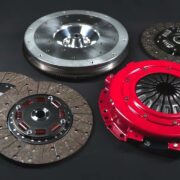
Of the numerous vehicle driving tips that could be offered, that one is not intuitive – accelerate through curves to achieve better traction. It appears that acceleration on the curve would result in a vehicle to loose traction and fishtail. It will should you apply an excessive amount of, but limited acceleration improves traction when going for a curve.
To know this, let us start looking at traction. Then let us observe how an automobile really wants to behave when rounding a curve, after which let us place the two together.
Traction is…
Traction is essential for travel within the direction we desire. Whenever we accelerate from an end, the automobile moves since it has traction using the road. It moves from the curb smartly when we accelerate more because greater acceleration provides more traction – until where we have lost traction due to applying an excessive amount of capacity to the drive wheels.
If we are on ice and snow, nearly any hard acceleration may cause the wheels to slide and also the vehicle to slip with techniques making it behave more based on momentum and gravity compared to the direction by which we are steering. When we accelerate gently, then we are prone to relocate a way and direction that people expect.
Think in Term of Vectors…
Now, consider vehicle travel when it comes to just one vector pointing within the direction your automobile really wants to travel. When you are driving straight, there’s a vector pointing directly in front of you since your drive wheels are pushing or pulling you for the reason that direction. Simple to know.
Now, think of the vector when you are coasting around a curve. It’s pointing in front of you and also for the outdoors from the curve because you are moving forward yet momentum really wants to get you off course. Accelerate hard and also you lose traction and slide in direction of momentum – the vector points difficult to the outdoors from the curve while you slide off course. It’s just like should you have had hit ice on the curve – you lose traction and also the vehicle goes where momentum and gravity would like it to go.
Putting it Together…
Considering the instance above where we lost traction on the curve, it’s not hard to realize that more traction could keep us pointed in the direction we desire (due to the fact a loss of revenue of traction had the alternative effect). We learned that elevated acceleration provides enhanced traction – up to and including point.
Therefore, when we accelerate just a little, then we are benefiting from enhanced traction and effectively redirecting the vector to suggest more for the preferred direction of travel and from the outdoors from the curve. For this reason experienced motorcyclists will slow lower a little entering a curve and accelerate with the curve – it will help them “stick” towards the road with increased traction.
Check it out Yourself…
Here’s a test to demonstrate the purpose. Drive having a steady feet around a curve you travel frequently and note the way it feels. Then next time drive round the curve, simply coast a little and find out the way it feels. Then, next time you drive round the curve use slight acceleration. You will find the main difference between your three approaches, and it’ll convince you that limited acceleration promotes traction inside a curve.








